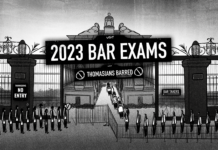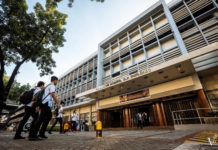All indications suggest that the University will continue with its hybrid setup for at least another academic year, as the Office of the Vice Rector for Academic Affairs (OVRAA) has directed academic units to plan for class schedules that do not involve purely online or purely onsite classes.
The OVRAA said no full face-to-face (F2F) classes would be conducted in the University next year to take “advantage of the gains from enriched virtual mode of instruction (EVM), especially as a contingency plan when on-site classes are not possible.”
Technology has already revolutionized many aspects of human life, and it has the potential to further transform the way teaching is delivered and learning is achieved. With the rise of digital technologies, the world has seen a proliferation of online courses, virtual classrooms, and educational apps, among other innovations. It has made hybrid learning both the current and the future.
With UST acknowledging that—at least for itself—hybrid is the way forward, it should also acknowledge the necessity of enhancing the campus Wi-Fi, Veritas.
Veritas is a vital resource for Thomasians to access virtual learning materials and take part in online class discussions while on campus. Unfortunately, its inconsistency has led to frustration among students, particularly because of the existence of Wi-Fi dead zones on campus and the limitation of only one device per student.
A weak and unreliable campus Wi-Fi is a significant impediment to learning. The potential benefits of digital learning in expanding educational access and promoting equity are immense, but according to the Asian Development Bank, its effectiveness hinges on better policy planning and the enhancement of digital infrastructure and capacity, among others.
Improving campus Wi-Fi may entail additional costs, but it is a necessary expenditure to improve access to education and quality of life on campus.
Additionally, the one-device limit for Veritas is outdated, unfair, and counterproductive. Most learners in the digital age use multiple devices, such as laptops, tablets, and smartphones to complete assignments, conduct research, and communicate with others. By limiting students to one device, the University hampers their productivity, creativity, and flexibility.
Undoubtedly, the internet plays a pivotal role in successfully transitioning to a technology-driven “new normal.” Therefore, improving campus Wi-Fi is not a luxury but a necessity for student-centered learning that prepares students for the demands and opportunities of the 21st century.
Enhancing the campus Wi-Fi system will also be advantageous for teachers, particularly given the growing prevalence of hybrid learning, which the world is realizing is not just a passing trend but is here to stay.
In order to fully support teachers in utilizing technology, investments need to be made in hardware and connectivity, so that teachers have skills for and access to the necessary technology.
As the great playwright Sophocles said, Veritas odit moras (truth hates delay). UST needs to improve its campus Wi-Fi as it goes hybrid.














